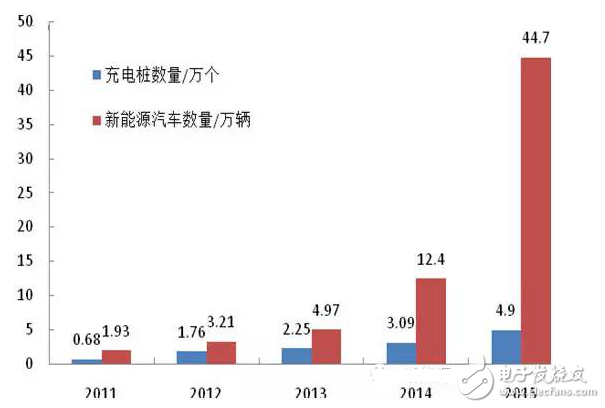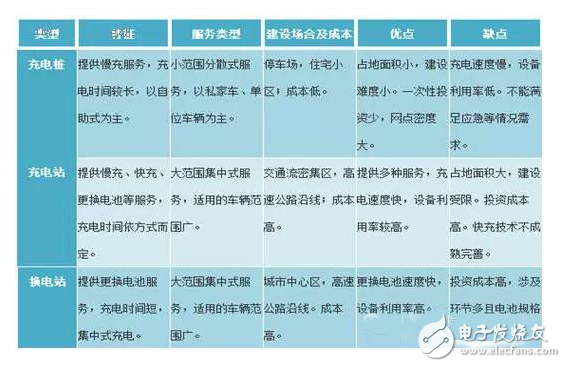In 2015, the State Council issued the “Guiding Opinions on Accelerating the Construction of Electric Vehicle Charging Infrastructure†and “Action Plan for Reconstruction of Distribution Network (2015-2020)†and “Guidelines for the Development of Electric Vehicle Charging Infrastructure (2015-2020) Related policies. It is required that by 2020, more than 12,000 centralized charging and replacement stations will be added, and more than 4.8 million decentralized charging piles will be installed. In 2016, Premier Li Keqiang’s work report in the two sessions put forward “to speed up the construction of new energy vehicle charging facilitiesâ€. This will indicate that China's new energy vehicle charging facilities will usher in major development opportunities, but also face a series of challenges.
I. Development opportunities
According to the data of the Ministry of Industry and Information Technology, in 2014, China built 28,000 charging piles and 723 replacement power stations. In 2015, 3,600 power stations were built and replaced, and 49,000 public charging piles were built, an increase of 18,000 compared with the end of 2014, a year-on-year growth rate of 58%. Although the status quo of charging has been improved under the joint promotion of the government and enterprises, the construction speed is far lower than the planning target.

It can be seen from the figure that in 2015, China's new energy vehicles showed explosive growth, with a production of 447,000 vehicles, a 3.5-fold increase over the same period last year and a global share of 30%. Although the landfill and charging storms in 2016 have slowed the growth of new energy vehicles, it is predictable that China will become the world's largest incremental market for new energy vehicles in the near future. It is estimated that by 2020, the output of new energy vehicles will maintain a compound annual growth rate of approximately 40%. This is tantamount to a major development opportunity. Industry people predict that the direct market size of new energy vehicle charging piles in the next six years is expected to reach 124 billion yuan. With the large-scale development of new energy vehicles, the demand for charging facilities will become more and more important in the new energy automobile industry chain, and the corresponding charging equipment will also have a large domestic market.
Second, facing challenges
Difficulties in charging are the bottlenecks in the development of electric vehicles. New energy vehicles need most of the scattered normal charging piles to facilitate the daily charging of users. At the same time, a relatively small number of relatively concentrated and well-positioned fast charging stations are needed to meet the needs of retail fast charging and centralized users. The increase in the number of charging piles, the improvement of quality, the standardization of standards and the charging efficiency are the mainstream development needs. The development of new energy vehicles has raised the challenge of charging, rapid, generalized, efficient and intelligent charging facilities. According to industry statistics, the charging facilities of new energy vehicles can be divided into three types: charging piles, charging stations, and power stations.

With the popularity of electric vehicles, the demand for charging facilities is bound to expand, and the requirements will be more demanding. The performance and conditions of existing charging facilities will not be sufficient to meet the needs of users. The charging facility will serve as an important entry point for the future of the car networking. Through the combination of charging companies, depots, property companies, urban parking management companies and other parties, the charging network has a large ecological circle, and the potential of the charging pile is fully exploited. The layout of the charging ecology is undoubtedly extremely strong. Strategic significance. Although the 13th Five-Year Plan outlines the grand blueprint for the comprehensive development of the new energy automobile industry in the next five years, in the short term, the development of the new energy automobile industry inevitably has some stage problems and difficulties:
1, charging pile installation is difficult to coordinate
In terms of charging pile installation, whether the old residential area has a fixed parking space, whether other owners agree to occupy the land and build the pile, and whether the residential power grid can afford it is a realistic factor affecting the installation.
2, there are certain security risks
As the mainstream power lithium battery technology route, there are still relative disadvantages in terms of safety and stability. In the past year, safety accidents and hidden dangers such as spontaneous combustion of new energy vehicles have received much attention from the market. For lithium battery manufacturers, in the future, the optimization of material properties and the technical process of producing materials need to be further improved. For vehicle manufacturers, the assembly inspection and system integration capabilities of the battery management system are equally important, and their quality requirements and testing processes need to be further strengthened.
3. Subsidies have retreated to new energy producers, and domestic suppliers are not competitive enough.
Although the subsidy of national policy subsidies is an inevitable trend, in line with the law of industrial development, the impact of future subsidies on the impact of new energy production manufacturers still depends on the maturity of the technological route and the rate of decline in costs. In this process, the ability to control the cost of SMEs that lag behind in technology upgrades and slower market response will be tested by the market. In addition, local government subsidies are an important factor in supporting the vigorous development of local new-source automobile industry. In 2015, the rapid development of new energy vehicles benefited from the high-level subsidies of 1:1 for local governments in most of the promotion areas. With the decline in economic growth and the tightening of local finances, there are many uncertainties in the implementation of local subsidies and the introduction of time in 2016, which may also adversely affect the development of the new energy automobile industry.
4, the construction speed of the charging network is not as expected
This year, the charging infrastructure will be newly built, but if the investment and construction speed of the charging network is not up to expectations during the year, it will still restrict the growth of new energy vehicles this year. For example, during the charging station, the charging station is similar to the service station to provide services such as consumer dining and car detection and maintenance. At the same time, according to a large number of customer data in the service process, the comprehensive service ecology from manufacturers, consumers to service providers is established. In turn, the big data analysis of the service ecosystem provides a basis for improving the quality of service levels.
5. How to connect electric vehicle charging
The charging pile will soon become the carrier of the urban Internet of Things and an important entrance for the Internet of Vehicles. It will promote the charging network, the Internet of Vehicles and the Internet of Things to build a “three-in-one†intelligent transportation system to form a future urban information physical system. Therefore, all parties in the industry need to coordinate the realization of charging facilities interconnection, payment interconnection, information interconnection, and cross the basic threshold of charging interconnection. The 2016 China Automotive Forum with the theme of “Innovation, Green, and Sharing†has been successfully held recently. “New Energy Vehicle Charging Ecology Opportunities and Challenges†is also one of the discussion topics. I want to work hard in enterprises, governments, users and other parties. Next, China's new energy vehicle development will certainly be better and better, breaking through constraints and obstacles, and moving toward a new situation of development.
Auto transfer swtich-ATS panel
. ATS panel
. ATS Switcher: ABB, Socomec, Chint, SmartGen, Askai
. ATS for two Generators
. ATS for Generator and Mains
. 25A-6300A
Auto Start,Ats Panel,Auto Load Transfer,Auto Transfer System, ATS, AMF
Guangdong Superwatt Power Equipment Co., Ltd , https://www.swtgenset.com